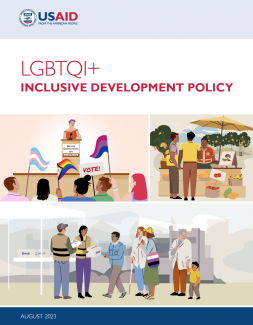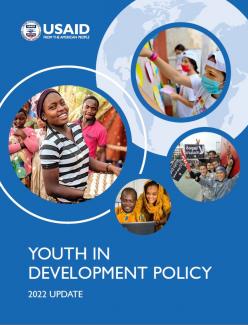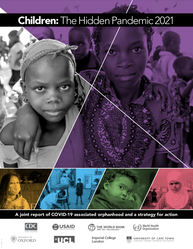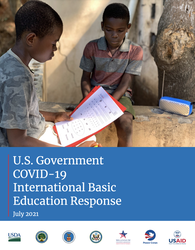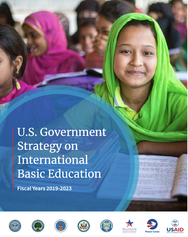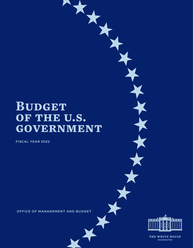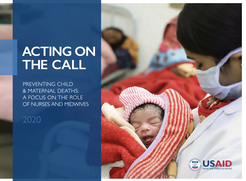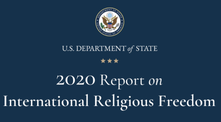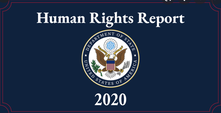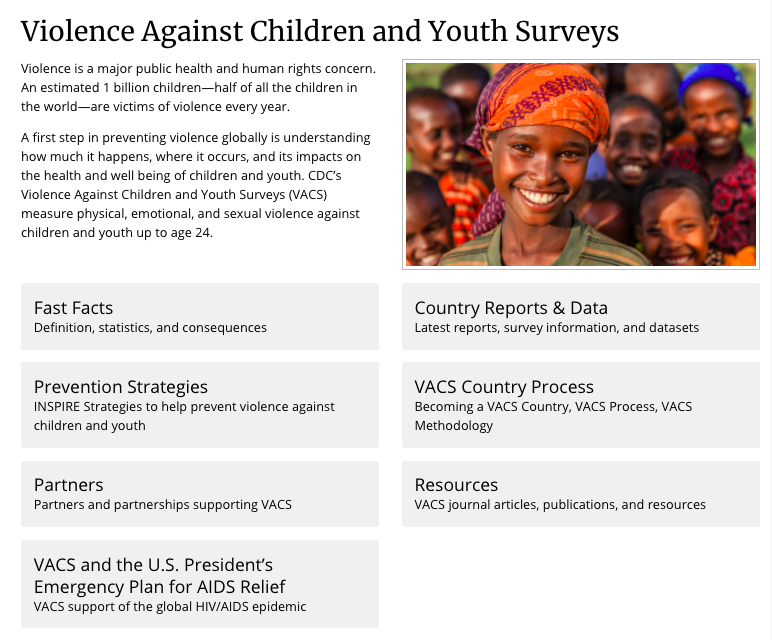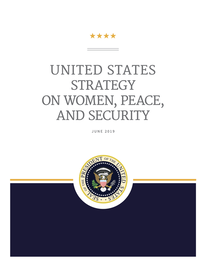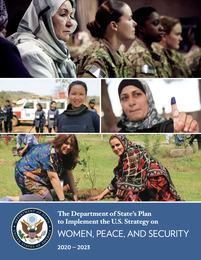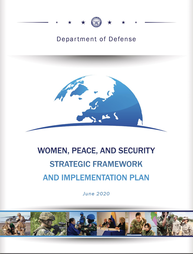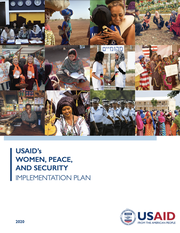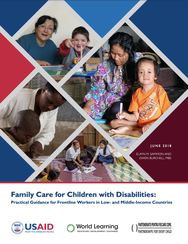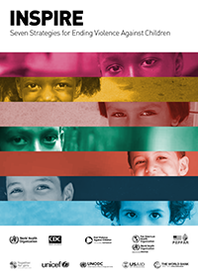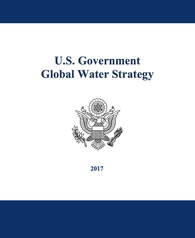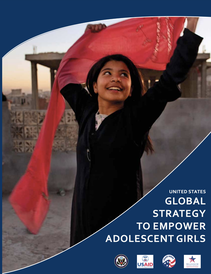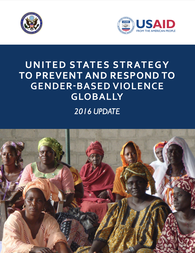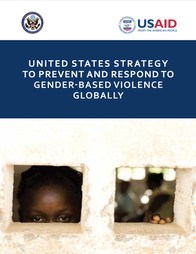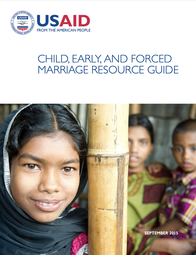|
USAID 2023 LGBTQI+ Inclusive Development Policy (2023). USAID affirms and celebrates lesbian, gay, bisexual, transgender, queer, and intersex (LGBTQI+) people and all people of diverse sexual orientations, gender identities and expressions, and sex characteristics (SOGIESC) as integral parts of every society. Diversity of SOGIESC exists in all societies, historical and contemporary, and all populations in every country. LGBTQI+ people are colleagues, partners, role models, leaders, neighbors, friends, and family members. Through the USAID LGBTQI+ Inclusive Development Policy (LGBTQI+ Policy), USAID recommits to its staff, local partners, the international community, other development agencies, and program participants around the world that LGBTQI+ individuals are a vital force in the work we do and that, by embracing an inclusive development approach, we will help our work serve all segments of society.
|
|
USAID Youth in Development Policy (2022). The 2012 USAID Youth in Development Policy was the first of its kind by a bilateral donor, and has proven pivotal in moving the needle for millions of young people around the world. As USAID updates this policy, however, the need to invest in young people to help solve our world’s pressing issues is even more apparent. Our world faces no shortage of crises that demand urgent action and partnership across borders with all demographics. A pandemic reminded us of our global interconnectivity. A changing climate is challenging marginalized communities around the world through extreme temperatures and weather patterns. And, the very notion of democracy is at risk, with a democratic recession threatening the freedom and stability of billions of people.
|
|
According to a new study published in The Lancet, an estimated 1.5 million children worldwide have experienced the death of a parent, custodial grandparent, or other relative who cared for them, as a result of COVID-19. The study, co-authored by the U.S. Centers for Disease Control and Prevention, USAID, the World Health Organization, the World Bank, and several leading universities, examines how these children are at risk of profound short- and long-term adverse effects on their health, safety, and well-being. The co-authors and respective institutions, including USAID, jointly issued the report, “Children: The Hidden Pandemic 2021 – A joint report of COVID-19- associated orphanhood and a strategy for action,” outlining the study findings and the recommended response. To access more, click: here.
|
|
U.S. Government COVID-19 International Basic Education Response (July 2021). The pandemic has devastated the education sector. School closures have disrupted learning for more than 1.6 billion students around the world. Responding to the impact of COVID-19 on the education sector requires utilizing coordinated technical expertise across the U.S. Government. This report highlights the collective impact of the USG response to COVID-19 related education access, attendance, retention, and learning. It also examines the successful elements of responses and looks at how they can be incorporated into forward-thinking foundational principles in educational programming to build back better. Learn more about USG responses in:
|
|
The goal of the U.S. Government Strategy on International Basic Education for Fiscal Years 2019 - 2023 (the Strategy) is to achieve a world where education systems in partner countries enable all individuals to acquire the education and skills needed to be productive members of society. To accomplish this goal, the U.S. Government has two principal objectives: 1. Improve learning outcomes; and 2. Expand access to quality basic education for all, particularly marginalized and vulnerable populations. Through a comprehensive approach to international basic education, the U.S. Government will use research, data, and evidence to help empower partner countries to better respond to their unique contexts, more holistically address their education needs, and build systems that can be fully supported by country resources, paving a way toward graduation from assistance. To download the report, click: here.
|
|
Trafficking in Persons Report, U.S. Department of State, July 2021. "This year’s Trafficking in Persons Report sends a strong message to the world that global crises, such as the COVID-19 pandemic, climate change, and enduring discriminatory policies and practices, have a disproportionate effect on individuals already oppressed by other injustices. These challenges further compound existing vulnerabilities to exploitation, including human trafficking. We must break this inhumane cycle of discrimination and injustices if we hope to one day eliminate human trafficking." Secretary of State Antony Blinken. The Trafficking Victims Protection Act of 2000, as amended (TVPA), defines “severe forms of trafficking in persons” as: • sex trafficking in which a commercial sex act is induced by force, fraud, or coercion, or in which the person induced to perform such an act has not attained 18 years of age; or • the recruitment, harboring, transportation, provision, or obtaining of a person for labor or services, through the use of force, fraud, or coercion for the purpose of subjection to involuntary servitude, peonage, debt bondage, or slavery. A victim need not be physically transported from one location to another for the crime to fall within this definition. To access the reports, click: here.
|
|
President's Budget Request: Budget of the U.S. Government, Fiscal Year 2022, The White House. "The Budget of the United States Government, Fiscal Year 2022 contains the Budget Message of the President, information on the President’s priorities, and summary tables." To access more, click: here.
|
|
Acting on the Call - Preventing Child & Maternal Deaths is the U.S. Agency for International Development (USAID)’s response to the 2012 global Call to Action. The document lays out a bold agenda to save the lives of women and children. Since 2014, this flagship report has served as a roadmap for accelerating progress against one of the Agency’s top global health priorities: preventing maternal and child deaths. The report highlights how far the global health community has come in accelerating access to essential health care for mothers, newborns, and children in 25 countries where they are most vulnerable. To access USAID information, click: here. To download this report, click: here.
|
|
Report on International Religious Freedom, U.S. Department of State, May 2021. "The annual Report to Congress on International Religious Freedom – the International Religious Freedom Report – describes the status of religious freedom in every country. The report covers government policies violating religious belief and practices of groups, religious denominations and individuals, and U.S. policies to promote religious freedom around the world. The U.S. Department of State submits the reports in accordance with the International Religious Freedom Act of 1998." To access the full report and more, click: here.
|
|
Country Reports on Human Rights Practices, U.S. Department of State, March 2021. "The annual Country Reports on Human Rights Practices – the Human Rights Reports – cover internationally recognized individual, civil, political, and worker rights, as set forth in the Universal Declaration of Human Rights and other international agreements. The U.S. Department of State submits reports on all countries receiving assistance and all United Nations member states to the U.S. Congress in accordance with the Foreign Assistance Act of 1961 and the Trade Act of 1974." To access the full report and more, click: here.
|
|
Violence Against Children and Youth Surveys (VACS), The Centers for Disease Control and Prevention in partnership with Together for Girls. Violence is a major public health and human rights concern. An estimated 1 billion children—half of all the children in the world—are victims of violence every year. A first step in preventing violence globally is understanding how much it happens, where it occurs, and its impacts on the health and well being of children and youth. CDC’s Violence Against Children and Youth Surveys (VACS) measure physical, emotional, and sexual violence against children and youth up to age 24.
To access VACS fact sheets, violence prevention strategies, and more, visit the CDC website: here To access all VACS country reports, visit the Together for Girls website: here and for additional fact sheets, summaries and more, click: here. |
|
U.S. Strategy on Women, Peace, and Security (2019), The Department of State's Plan to Implement the U.S. Strategy on WPS 2020-2023, The Department of Defense WPS Strategic Framework and Implementation Plan, Homeland Security's plans, and the USAID WPS Implementation Plan. "Through the passage of the Women, Peace, and Security Act of 2017, the United States became the first country in the world with a comprehensive law on Women, Peace, and Security (WPS). The U.S. Government also released the 2019 U.S. Strategy on Women, Peace, and Security , and the State Department Implementation Plan in 2020, which has strengthened the U.S. priorities of protecting and supporting women in efforts to prevent conflict, promote peace, and countering violent extremism. The Secretary’s Office of Global Women’s Issues is proud to serve as the lead coordinating office for the State Department’s WPS efforts." To access the reports and more, click: here and here.
|
|
Advancing Protection and Care for Children in Adversity: A U.S. Government Strategy for International Assistance 2019-2023 is a whole-of-government commitment and approach to investing in the development, care, dignity, and safety of the world’s most-vulnerable children and their families. U.S. Government partners involved in implementing this Strategy include the U.S. Departments of Health and Human Services, Labor, and State; the Peace Corps; and USAID. To access more, click: here.
|
|
Family Care for Children with Disabilities, June 2018. This report was made possible by USAID, World Learning, And Partnership for Every Child. The Better Care Network highlights this report, stating: "Family Care for Children with Disabilities: Practical Guidance for Frontline Workers in Low- and Middle-Income Countries was developed to help front-line personnel (social service workers and others) in low- and middle-income countries to work effectively with children with disabilities and their families. It was written particularly for those who have little or no experience working with children with disabilities, and it provides easy to read information and advice for those who may have little or no experience working with children with disabilities. It is intended to supplement other guidance on case management. It includes more than 50 pages of practical guidance, 153 links to resource documents, as well as tips for policy makers and program planners." To access more, click: here and here.
|
|
INSPIRE: Seven strategies for ending violence against children, World Health Organization, Centers for Disease Control and Prevention, et al, 2016. INSPIRE identifies a select group of strategies that have shown success in reducing violence against children. They are: implementation and enforcement of laws; norms and values; safe environments; parent and caregiver support; income and economic strengthening; response and support services; and education and life skills. To access the full report and more information, click: here and here.
|
|
The U.S. Global Water Strategy (2017) envisions a water-secure world, where people and nations have the water they need to be healthy, prosperous, and resilient. USAID developed an agency-specific plan (the “Water and Development Plan”) in conjunction with the whole-of-government Global Water Strategy (see page 12 of the Global Water Strategy). It provides a framework for USAID’s contribution to the U.S. government’s shared vision for a water-secure world, and links directly to the following strategic objectives in the Global Water Strategy:
|
|
U.S. Global Strategy to Empower Adolescent Girls (2015). The first-ever U.S. Global Strategy to Empower Adolescent Girls, launched in March 2016, brings together four U.S. government agencies to tackle barriers that keep adolescent girls from achieving their full potential. As part of the strategy, each agency— the State Department, USAID, the Peace Corps, and the Millennium Challenge Corporation—has its own implementation plan. The goal of U.S. government efforts under this strategy is to ensure adolescent girls are educated, healthy, economically and socially empowered, and free from violence and discrimination, thereby promoting global development, security, and prosperity. Our efforts aim to enhance their access to quality education; to reduce their risks of child, early, and forced marriage (CEFM); to reduce their vulnerability to gender-based violence, including harmful norms and practices such as female genital mutilation/cutting (FGM/C); and to provide them with the tools necessary to fully participate in their societies, claim their rights, and make informed decisions about their lives. This strategy sets forth the following objectives:
To download the report, click: here. |
|
United States Strategy to Prevent and Respond to Gender-Based Violence Globally, 2016 Update, U.S. Department of State and USAID. "In August 2012, President Obama issued Executive Order (E.O.) 13623, 'Preventing and Responding to Violence Against Women and Girls Globally,' directing all departments and agencies to implement the United States Strategy to Prevent and Respond to Gender-based Violence Globally. Since that time, significant strides have been made across Federal departments and agencies in furthering the strategy’s goals." For the original U.S. Strategy to Prevent and Respond to Gender-Based Violence Globally, 2009-2017, click: here. For the 2016 Update, click: here.
|
|
Child, Early, and Forced Marriage Resource Guide, USAID, September 2015. This resource guide provides information on how the United States Agency for International Development (USAID) sectors, missions, and staff can integrate child, early, and forced marriage (CEFM) prevention and response into their programming. The guide provides both the rationale of why and approaches to how USAID’s efforts can address CEFM.To access more, click: here.
|
|
Youth in Development: Realizing the Demographic Opportunity, USAID Policy, October 2012. "This Policy on Youth in Development is the first of its kind for USAID. It is both timely and necessary as more than half of the world’s population today is under the age of 30, with the vast majority living in the developing world. As Secretary Clinton said in Tunisia in February 2012,“…in every region, responding to the needs and aspirations of young people is a crucial challenge for the future.”The policy is predicated on emerging best and promising practice for youth development and engagement that are gleaned from USAID and partner’s experience in youth programming, as well as through consultations with young people across the developing world. The policy is further informed by principles and practices articulated in the Presidential Policy Directive on Global Development (PPD), the Quadrennial Diplomacy and Development Review (QDDR), the National Security Strategy 2010, State Department Youth Policy 2011, USAID Forward, and the USAID Policy Framework 2011-2015." To access the report and more information, click: here.
|

